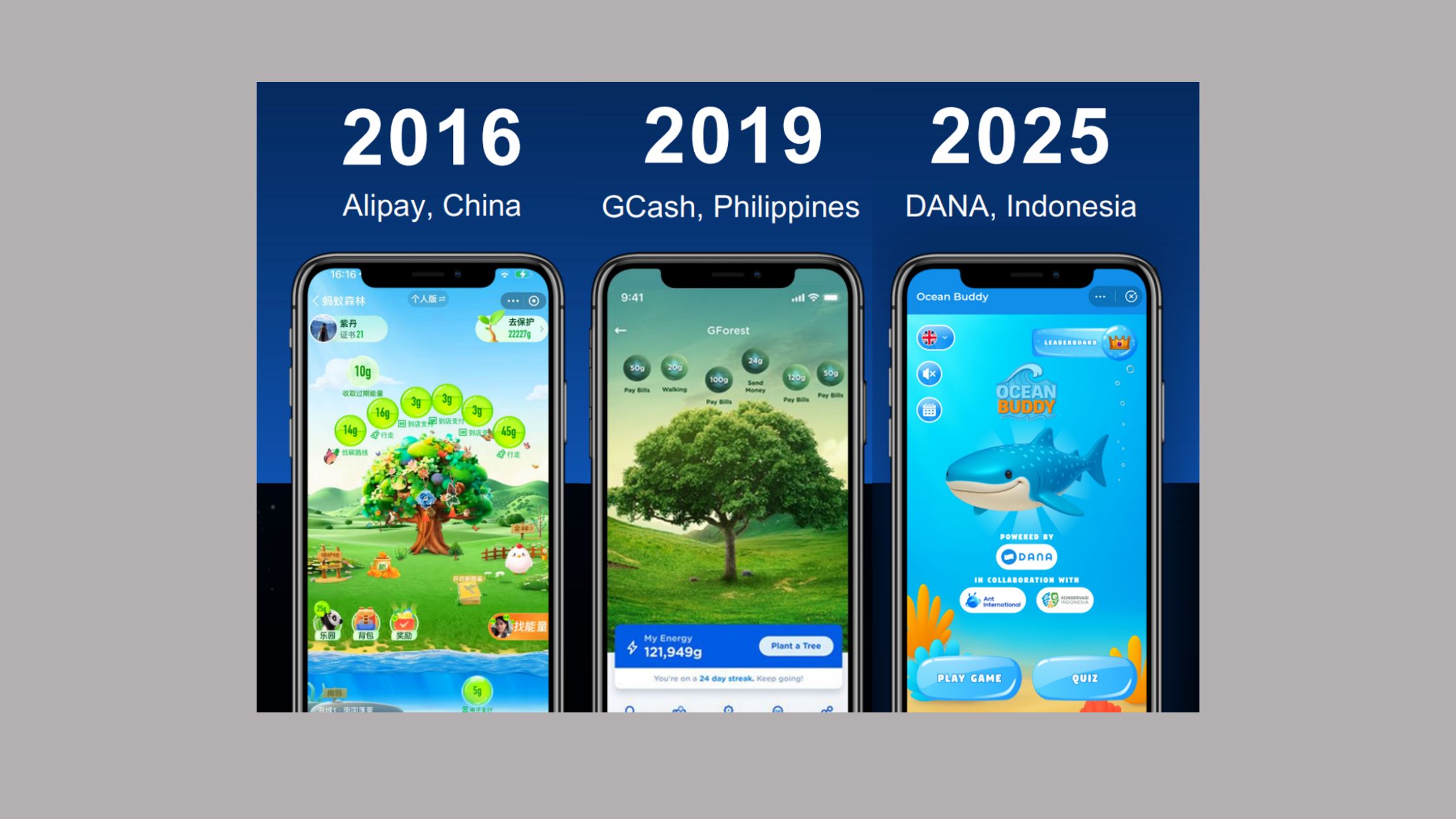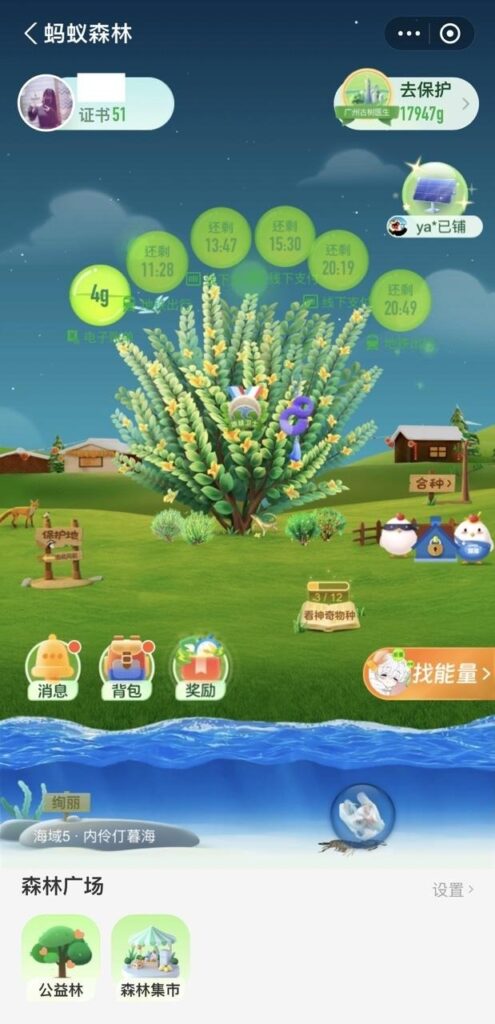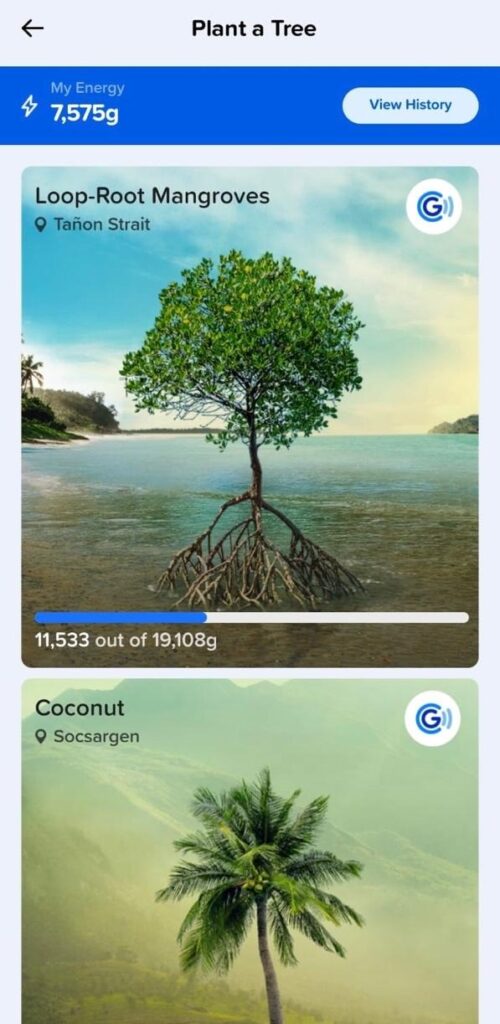AsiaTechDaily – Asia's Leading Tech and Startup Media Platform

What’s next for Technology-Driven Sustainability? Takeaways from Ant Forest
Lots of progress have been made in past decade for programmers and engineers to convert digital technology into a device for environmental causes from Silicon Valley to West Africa. However, substantial challenges remain: How to develop a reasonable methodology to measure the aggregate of individual contributions so as to match them with real investments on the ground? More importantly, how to sustain the momentum of digital environmentalism among a broad base, and even deepen individual commitment even when no one is watching?
How does Ant Forest work?
As a pioneer in this space of innovation, Ant Forest, a green initiative launched by Ant Group within its Alipay app in 2016, tries tackling these challenges head-on.
By harnessing the power of digital platforms and engaging users in fun, interactive, and efficient ways, the Ant Forest model can inspire hundreds of millions of people to raise environmental awareness and take meaningful climate actions, said Eric Jing, Chairman of Ant Group, at the International Union for Conservation of Nature (IUCN) World Conservation Congress 2025 in Abu Dhabi on October 8.
Jing shared the story of Alipay Ant Forest. It encourages individuals to embrace sustainability through everyday actions, incentivizing them with virtual “green energy points” for activities such as biking to work, using public transit, or recycling online. These virtual points are then translated into real-world actions such as tree planting, biodiversity conservation, and habitat restoration through programs funded by Ant Group and carried out by non-profit and environmental organizations.

Today, more than 750 million people across China have participated in Ant Forest in the Alipay app, contributing to a greener world with their everyday actions.
However, the journey for Ant Forest has not been without obstacles. It has developed several solutions to address common challenges associated with such initiatives.
Why the need for a virtual points system?
The Points system is not designed primarily to measure, verify and discipline individual green behavior for material benefits. The mechanism is a solution to the puzzle that “you can’t manage or mobilize or track something you can’t measure”. The Points carry no monetary value. It has only 2 uses.
Firstly, the points solely belong to the individuals to make it possible for them to visualize and extend their conservation efforts.
Second, Ant Group is able to set apart a matching fund tied to the volume of the Points of 750 million participants, to be invested in real green projects, even when the vast majority of them might not be able to spend time and money on the ground. By August 2025, according to Ant Forest, Ant Group has committed RMB 4.57 billion for planting 619 million trees across 13 provinces and for conservation efforts covering 4,900 km² across 34 protected sites. Each project undergoes independent verification by third-party organizations.

The idea is not to turn points into goodies. It is a device to maintain and enhance long-term engagement. This gradualist journey may begin with a basic awareness of environmental issues, such as desertification in Inner Mongolia. Then users initially become curious and gradually develop a deeper commitment to the cause. Over time this dynamic journey transforms participants from passive followers into active contributors, with some even started taking greener actions that have not yet been included in Ant Forest. This progression underscores the power of digital platforms in fostering sustained environmental stewardship.
How is Ant Forest expanding its environmental impact through global partnerships?
An experiment of this scale cannot survive or evolve with one supporter alone. A key to Ant Forest’s ongoing success is enhancing expertise and expanding partnerships. Collaborations with experts and organizations, both locally and globally, effectively enhance the initiative’s impact while tailoring efforts to local contexts.
For instance, Ant Forest partners with reputable organizations like the China Green Foundation and the Shan Shui Nature Conservation Center to monitor and verify that tree planting projects meet survival requirements. The program also collaborates with The Nature Conservancy (TNC) to assess and verify the carbon benefits of its projects, including tree planting efforts.
The Ant Forest model has earned global recognition. In 2017, Fortune ranked Ant Financial (now Ant Group) #6 on its “Change the World” list for the initiative’s positive environmental impact. Two years later, Ant Forest received the United Nations’ highest environmental honor—the “UN Champions of the Earth” award, followed shortly by the “UN Global Climate Action Award” for its innovative use of digital technology to scale up climate action.
The Ant Forest story has inspired similar initiatives worldwide.
Ant’s international arm, Ant International, has launched AquaViva, a global marine conservation program. By partnering with Conservation International, a global organization with over 25 years of experience in the Asia Pacific region, AquaViva aims to leverage technological innovation and digital platforms to promote sustainability and support eco-friendly initiatives benefiting marine ecosystems.
In 2019, the Philippines’ leading mobile wallet GCash launched GForest, enabling users to contribute to local reforestation through low-carbon lifestyle choices.

At the World Conservation Congress 2025, DANA and Ant International, together with Konservasi International, unveiled the Ocean Buddy initiative, an interactive in-app mini program to raise awareness and drive long-term public participation in marine conservation among DANA’s 200 million users in Indonesia. Ocean Buddy leverages gamification incentives and lively visual designs to enhance broad-based, long-term user participation in conservation efforts, specifically the protection of whale sharks along the southern coast of Java.

Despite being a relatively young initiative, Ant Forest has provided invaluable insights and set a benchmark for the broader industry. Challenges and puzzles remain, but such experiments clearly validate the value and potential of digital technology in advancing global sustainability through broad-based, authentic public participation.



